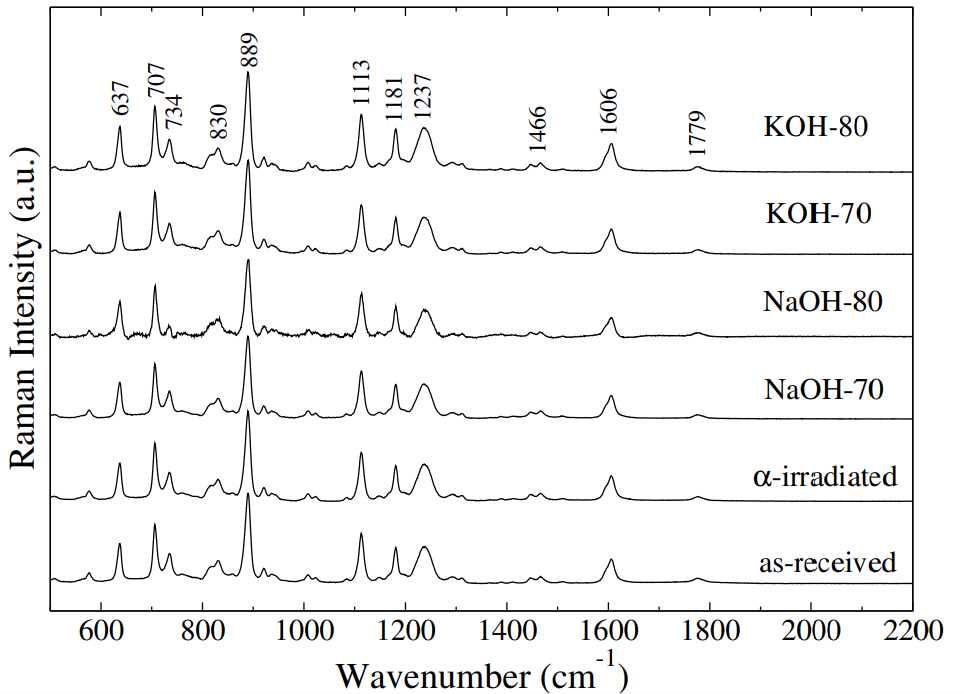Overview
Durolon® is a commercial polycarbonate with excellent thermal and mechanical properties. In this study, we evaluated its performance as a nuclear track detector for low-energy alpha particles.
Chemical etching with NaOH and KOH solutions, as well as Raman and UV-vis spectroscopy, were used to characterize the etch pit formation and radiation-induced structural changes in the material.
While previous studies commonly used Makrofol and CR-39 plastics, our results show that Durolon® performs comparably, making it a viable Brazilian-made alternative for dosimetry and radiation monitoring applications.
Methodology
- Durolon® samples irradiated with 1.5 MeV alpha particles (241Am source)
- Chemical etching with NaOH and KOH at 70°C and 80°C
- Etch pit imaging via optical microscopy and ImageJ analysis
- Raman and UV-vis spectroscopy used to assess molecular degradation
- Semi-empirical modeling of pit growth: V(t)
Main Results
- Pit growth follows √t trend after initial transition regime
- Highest growth rate observed with NaOH at 80°C
- Raman spectra show increased structural disorder after etching
- UV-vis spectra reveal enhanced optical absorption due to degradation
Durolon® behaved similarly to well-known detectors, showing good sensitivity to alpha particles and compatibility with optical readout techniques.

How to Cite
Pires, K. C. C., Abuchaim, Y., Künzel, R., Guedes, S., Assunção, M., Trindade, N. M., ... & Santos, O. C. B. (2024). Durolon® polymer as a nuclear track detector: Characterization by chemical etching. Radiation Measurements, 175, 107155.
Title: Durolon® polymer as a nuclear track detector: characterization by chemical etching
Link: Access full paper
Collaborators: University of São Paulo, Federal University of São Paulo, University of Campinas, IPEN